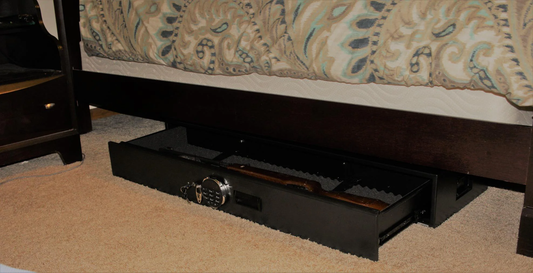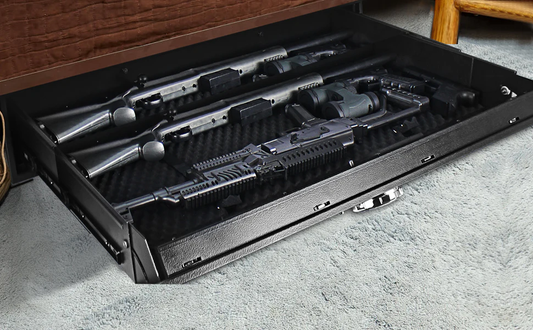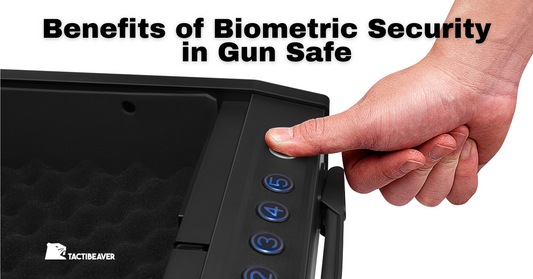Key Takeaway: As a first-time gun owner, you need government-issued photo ID and proof of residency for the legal purchase, professional firearms safety training covering the four cardinal safety rules, a quality gun safe or lock box for secure storage, basic cleaning and maintenance supplies, and ongoing commitment to practice and legal compliance to responsibly exercise your Second Amendment rights.
Introduction
With over 5.4 million Americans purchasing their first firearm in recent years, new gun ownership has reached unprecedented levels. If you're among these first-time buyers, the sheer volume of information, legal requirements, and safety considerations can feel overwhelming. This comprehensive guide breaks down everything you need to know as a responsible new gun owner.
Legal Requirements and Documentation
Federal Requirements
Understanding federal law is your starting point as a new gun owner. All purchases through licensed dealers require completion of ATF Form 4473 and successful passage of the National Instant Criminal Background Check System (NICS).
Key Federal Requirements:
- Age Requirements: 18+ for rifles/shotguns, 21+ for handguns
- Background Check: Required for all dealer purchases
- Prohibited Persons: Include those with felony convictions, active restraining orders, or specific mental health adjudications
- Waiting Periods: Typically range from 3 to 14 days in the 13 states that require them
State and Local Laws
State and local regulations add significant complexity that varies dramatically across the country. Concealed carry permits represent one of the most variable aspects, with requirements ranging from extensive training and background checks in "may issue" states to no permit required in "constitutional carry" states.
Variable State Requirements:
- Concealed Carry Permits: 29 states now allow constitutional carry (Texas, Florida, Georgia), while restrictive states like California require extensive training and discretionary approval
- Registration: California requires comprehensive firearm registration, while most states including Texas and Florida have no registration requirements
- Storage Laws: Massachusetts requires all firearms locked, California mandates secure storage with children present, while 26 states total have some form of safe storage laws
- Transportation Laws: Vary from California's locked container requirements to Texas allowing loaded carry in vehicles with proper licensing
Documentation to Gather
Before visiting any firearms dealer, prepare essential documentation:
- Government-issued photo ID (driver's license or passport)
- Proof of current residency (utility bills or lease agreements)
- Additional state-specific documents as required
Essential Safety Equipment and Training
Safety equipment forms the non-negotiable foundation of responsible gun ownership, with a quality gun safe or lock box representing your most critical investment after the firearm itself. This primary storage solution protects against unauthorized access, theft, and accidents while ensuring compliance with state storage laws. Beyond secure storage, essential safety equipment includes additional security measures like trigger locks and cable locks, quality eye and ear protection for range use, and basic first aid supplies and knowledge for emergency preparedness.
Professional training should never be considered optional for new owners, with basic firearms safety courses through organizations like the NRA providing fundamental knowledge covering the four cardinal safety rules: always treat every firearm as loaded, never point the muzzle at anything you don't intend to destroy, keep your finger off the trigger until ready to shoot, and be sure of your target and what lies beyond it. Training options include basic firearms safety courses for fundamental knowledge through NRA or similar organizations, concealed carry classes required in most states for carry permits, ongoing practice through regular range sessions for skill maintenance, and specialized courses such as hunter safety or other purpose-specific training to develop competency in your intended use of the firearm.
Choosing Your First Firearm
Factors to Consider
Selecting your first firearm requires careful evaluation of several key factors. Your intended purpose – whether home defense, concealed carry, hunting, or recreational shooting – significantly influences the best choice for your needs.
Key Considerations:
- Intended Purpose: Home defense, concealed carry, hunting, or recreational shooting
- Physical Factors: Hand size, grip strength, physical limitations
- Experience Level: Simpler systems and manageable recoil for beginners
- Budget: Realistic price range planning
Popular First-Time Options
For beginners, the choice often comes down to revolvers versus semi-automatic pistols, each offering distinct advantages.
Firearm Types:
- Revolvers: Simple, reliable operation
- Semi-Automatics: Higher capacity, faster reloading
Size Classifications:
- Full-Size: Better accuracy and control
- Compact: Balance of concealability and shootability
- Subcompact: Maximum concealment
Beginner-Friendly Calibers:
- .22 LR: Low recoil, affordable ammunition for training
- 9mm: Versatile with manageable recoil
- .38 Special: Good option for revolver preference
Where to Shop
Federal Firearms License (FFL) dealers provide legal compliance assurance and often valuable expert guidance for new buyers. Gun shows offer variety and the opportunity to handle multiple firearms, but require the same legal processes as dealer purchases.
Essential Accessories and Equipment
Beyond your primary firearm and gun safe, consider these additional items: proper storage solutions for different scenarios (home, vehicle, travel), basic maintenance supplies (cleaning kits, lubricants, tools), range gear (targets, range bag, additional magazines), and if applicable, carry accessories like holsters and gun belts designed for your specific firearm.
Common Mistakes to Avoid
New gun owners should avoid these common pitfalls: inadequate training before purchase, improper storage leading to accidents, ignoring local laws and permit renewal deadlines, buying the wrong gun for intended use (like a full-size pistol for concealed carry), neglecting regular practice and maintenance cleaning, skipping advanced training courses, failing to budget for ongoing costs like ammunition and range fees, and lacking mentorship or community support from experienced shooters.
Conclusion
Responsible gun ownership requires a significant commitment to safety, legal compliance, and continuous learning that extends far beyond your initial purchase. Success means understanding legal requirements, investing in proper safety equipment, committing to ongoing training, and maintaining your firearm properly. With proper preparation and quality equipment, you can exercise your Second Amendment rights confidently and responsibly.
Quality equipment forms the foundation of responsible ownership, and Tactibeaver offers the essential products new gun owners need:
Gun Safes - Tactibeaver offers premium gun safes that provide the security and accessibility responsible owners demand. Their comprehensive collection ranges from compact biometric models for quick access to full-size vault safes for comprehensive protection.
Gun Cleaning Kits - Tactibeaver's professional-grade cleaning kits ensure your firearms remain in peak operating condition throughout your ownership journey. These kits feature caliber-specific tools and premium solvents that keep your investment protected and performing reliably.
Visit tactibeaver.com to explore their complete range of products designed for responsible gun owners who demand quality and reliability.






